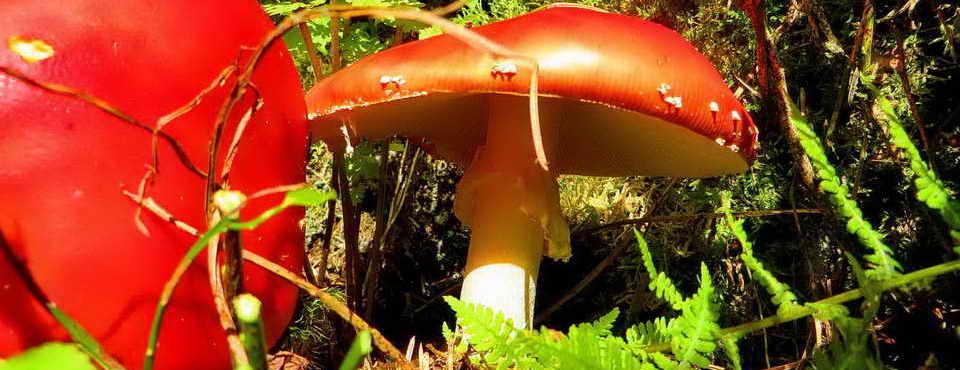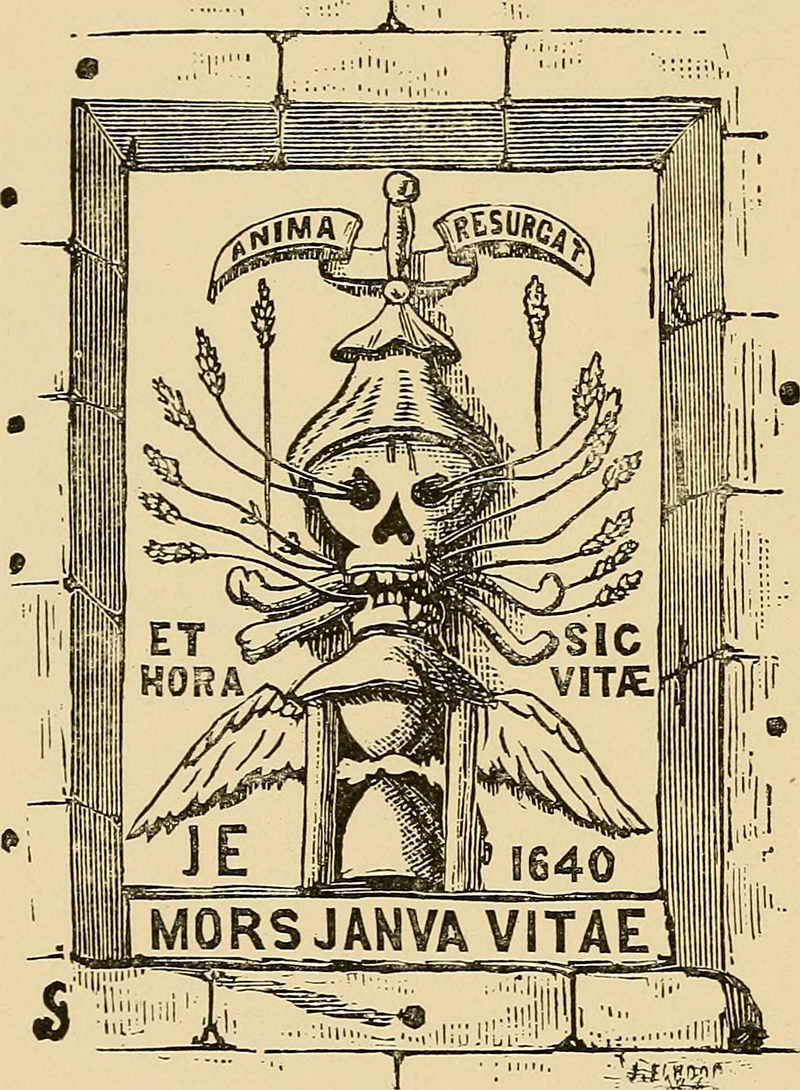









This walk: 2015-5-13. Oak catkins, oak apples, gorse blossom, violet, Yeo Farm, ladder stile, bluebells, step stile, Burrator House, Portland Lane, Sheepstor (St. Leonard's) Church, village cross, churchyard cross, war memorial, Rajahs of Sarawak, bull ring, St. Leonard's Holy Well.
Walk details below - Information about the route etc. Google Satellite view of the area - including the GPS track of the walk (compare with the Ordnance Survey map plus track below)The path ahead .....
Oak tree male catkins, with young leaves expanding.
Oak apples, or oak apple galls, also known as Devonshire galls! Also called marble galls (being the size of marbles) and possibly caused by the gall wasp, Biorhiza pallida. They might be oak marble galls that can occur on the common oaks, caused by another gall wasp, Andricu kollari, but this wasp needs the Turkey Oak to complete its life cycle. Spangle galls can also be found on the underside of oak leaves but they are smaller and at early stages brightly coloured; they are caused by another gall wasp, Neuroterus quercusbaccarum.
Another view of the path ahead, lined by coconut-scented gorse blossom .....
Common Gorse aka European Gorse blossom: Western Gorse< is a low, ground hugging plant and flowers later. See here< for more details.
Young Common, English or Pedunculate oak, Quercus robur leaves. The acorn is borne on a stalk called a "peduncle" whereas on the sessile oak, Quercus petrea, they are borne directly on the twig. In this oak, the leaves have small basal lobes where they join the stalk and these can be seen at the lower, left edge of the photograph.
An alternative, sunken path.
Young ash leaves.
Young beech leaves .....
Beech leaves.
The path ahead before the turn right towards Yeo Farm.
Centrally - young Hard fern (Blechnum spicant) vegetative fronds i.e. non-reproductive fronds.
I will call this a Common Violet (Viola riviniana) because I didn't look closely and there are several alternatives and I'm not going to excite anyone with a (false) rarity ... other violets are: Sweet violet (V. odorata), Dog violet (V. canina), Early dog violet or Woodland violet (V. reichenbachiana), Bog violet (V. palustris), Hairy violet (V. hirta), Teesdale vioet (V. rupestris), Fen violet (V. stagnina aka V. persicifolia) and Pale heath violet aka Pale dog violet (V. lactea). Some can be ruled out due to their preferred habitats.
First view of Yeo Farm .....
Yeo Farm, with flowering wisteria ...... in 1992 this was a ruin and had been used as a cowshed for many years! Source:Mike Brown's Guide to Dartmoor CD-ROM (2001), Dartmoor Press, Plymouth.
The lintel dates from 1610 AD and bears the initials IW, possibly for John Willcocks, with the "T" signifying his wife? The other symbol the formerly secret Christian Ichthys sign of the fish.
A bridge on the route, looking back .....
Looking forward from the same location.
A deep run-off area - Smallacombe.
Looking down on a sunken lane (see 3rd photograph below for another view) .....
Bluebells, Hyacinthoides non-scripta, seen on a hedge ,,,,,
Another view ..... Woodland Trust link to bluebells (well worth a look) .....
Looking down the sunken lane after joining it at the top.
Greater Stitchwort (Stellaria holostea), with 5 cleft, rounded petals: Lesser Stitchwort (Stellaria graminea) has more slender, deeply divided petals.
The way into Burrator Wood, by ladder stile .....
Scene over the stile .....
Bluebells in Burrator Wood ......
Bluebells in Burrator Wood ......
Bluebells in Burrator Wood ......
Bluebells in Burrator Wood ......
Bluebells in Burrator Wood ......
Bluebells in Burrator Wood ...... except that this one isn't blue, it's a "whitebell" .....
Bluebells in Burrator Wood ......
Bluebells in Burrator Wood ......
A church path step stile built into the side of a hedge - the way out of Burrator Wood ......
Another step stile on the other side of the hedge.
Burrator House, first recorded in 1718, now much altered. Beara Tor (the origin of "Burrator"), meaning "the tor in the wood", is in its grounds. Sir James Brooke (1803-1868), the first White Rajah of Sarawak, the largest of Maya's thirteen states, lived here from 1859 to 1868. The house was sold to Lord Roborough (the Lopes family and Maristow Estate) in 1877 with 72 acres of land. It ha had various incarnations as a farmhouse and country hotel (Dartmoor Magazine, Issue 124, Autumn 2016). See further internet links below.
An impressive tree passed along the route, the previous step stile can be seen in the corner of the field - towards the right edge of the photograph.
Sheepstor church with Sheeps Tor behind, seen from Portland Lane .....
As previous photograph.
As previous photograph.
Colly or Sheepstor Brook, looking towards Burrator.
I remember similar gatherings around the village pump where people came to draw their water (St. Erth, Cwll) - we'm didn't hev no cross!
A village memorial bench .....
This seat was erected and the area
improved in memory of
KATHARINE FREDERICA ALBERTHA LADY CARNOCK
in 1969 by her husnand and son
The lych gate at Sheepstor Church .....
Lych gate and church tower .....
The lich-stone (on which uncoffined corpses could be rested) at the lych gate, as the funerary party waited for the clergy, with Sheepstor Village Cross behind .....
Sheepstor Village Cross, erected by vicar Hugh Breton in 1911 to mark the coronation of King George V. Low relief crosses are carved on two sides of the shaft, which was removed from a field where it was serving as a cattle rubbing post near Burrator House.
The church tower.
Southern aspect of St. Leonard's Church, Sheepstor, the prominent cross to the left is Sheepstor Memorial Cross i.e. the war memorial .....
The war memorial, the arms taper slightly inward towards the shaft: it records two names for WW1 and one for WW2 .....
IN
GRATEFUL MEMORY OF
LANCE CPL WILLIAM MORTIMER
AND
LANCE CPL HARRY BLATCHFORD
OF THIS PARISH
WHO GAVE THEIR LIVES FOR KING AND
COUNTRY IN THE GREAT WAR 1914-1918.
GREATER LOVE HATH NO MAN THAN THIS THAT
A MAN LAY DOWN HIS LIFE FOR HIS FRIENDS
ST JOHN 15 v 13
Closer view of the porch ..... the "secret" cross of the churchyard lies embedded in the right-hand corner of the path seen just above this caption .....
This is thought to be part of an old cheese press, with an incised cross ..... turning around 180� from the church porch .....
Sheepstor Churchyard Cross - the link tells the story .....
Another view of the cross, alongside an ancient stile.
The sculpture above the porch door, symbolising life after death, with corn sprouting from the eye sockets of the skull and with an hour glass below to signify the inevitabilities of the passing of time. The inscription above the sculpture says "ANIMA REVERTET /Alternatively RESURGAT - The soul will return" while the insctption below says "MORS JANVA VITAE (Alternatively: MORS IANUA VITAE) - Death is the door to life" and at either side and halfway down "ET HORA : SIC VITAE - As the hour, so life passes". Also, hidden by the greenery above, is JE (left side) and 1640 (right side), JE could signify John Elford who once lived at Langstone Manor. The carving is thought to be the dial stone of a sundial, the pointer ("gnomon") and numerals of which are lost. Sources: (1) Legendary Dartmoor - Sheepstor church and (2) John Pegg (1986), Discover the Churches of Dartmoor, John Pegg Publishing, Fembury, Kent, page 55.

By Internet Archive Book Images [No restrictions], via
Wikimedia Commons
Probably from Alice Morse (1902), Sundials
and Roses of Yesterday, The MacMillan Co., New York, London
The eastern aspect of the church .....
The tombs of the White Rajahs of Sarawak ..... Sarawak is now a Malaysian state in the north of the island of Borneo ..... originally granted to Charles Brooke as a Kingdom in 1841 by the Sultan of Brunei, as a reward for helping the Sultan to fight piracy and insurgency .....
Sir James Brooke, KCB, DCL, the first White Rajah of Sarawak .....
KCB - Knight Commander
of the Order of the Bath.
DCL - Doctor of Civil Law
Family memorial stones .....
GCMG - Knight Grand Cross of the Order of St. Michael & St. George
Another view: Sarawak, in northern Borneo, was occupied during WW2 by the Japanese. After the war, the 3rd rajah ceded his life interest in Sarawak to the British Colonial Office in exchange for pensions for himself and his daughters.
Looking down from the churchyard path onto the area known as the Bullring (now privately owned), where bull-baiting was practised. There was a time when beef was not allowed to be sold without going through this process which was said to make the meat more tender - there are records of fines for not complying .....
Item rec of Wm: Jerman Jn: Jope butchers for killinge of a bull before he was bayten vs Itm recd of severall butchers for killinge of bulls without beatinge and watering of hides � �1 0s 2d
Zoomed view into the bullring where the iron ring for attaching bulls is still to be seen in place - hanging from the top-left corner of the large stone in the ring of granite pillars.
Daisies in the churchyard.
South aisle .....
North aisle, with the pulpit ......
The pulpit .....
Looking up the bell tower .....
The font .....

Commemorative wall plaques ..... see the following four photographs .....
Brooke family history plaque 1 .....
Brooke family history plaque 2 .....
Brooke family history plaque 3 .....
Brooke family history plaque 4 .....
The panel beneath bears the text "These four Englishmen of differing character and temperament were at one in their fidelity to the policy enshrined in the first Rajah's words: "Sarawak belongs to the Malays, the Sea Dayaks, and Land Dayaks, the Kayans and other tribes: not to us. It is for them that we labour; not ourselves"
Notice in the porch.
St. Leonard's Holy Well, seen after exiting the churchyard by the far gate i.e. in the east wall and turning right back towards the village cross. From the link: "It is sheltered by what looks like, and in fact is, a fragment of the church's old east window, removed during Victorian restorations." Also, a Dartmoor Trust archive photograph.
Another view of the village cross .....
As previous photograph.
Group photograph in Portland Lane.
Sheeps Tor from Portland Lane .....
Zoomed view.
Hedge near the top of Portland Lane.
Furze or Common gorse again, as a local reminder that "When the gorse blossom's missing, there'll be no more kissing!"
Gorse galore!
Gorse blossom .....
Lots of it - near the top of Portland Lane.
The copse around Ringmoor Cottage .....
The top of Portland Lane as it joins another (un-named?) small road out to the Scout Hut and around to Sheepstor village. Photograph taken for the deep drain area and protective kerb stones .....
Looking over the edge of the road reveals what appears to be two sets of steps - the nearer set is topped by a culvert across under the road, presumably for drainage in times of heavy rain. The entrance to the culvert is located immediately left of the ball of "straw" nearest the camera - it was nigh on impossible to get a "face on" view without risking a tumble down the slope!
MAP: Red = GPS satellite track of the walk.

This walk was reached via Plympton, Cadover Bridge, turning right at Brisworthy and again before Sheepstor village, skirting the north edge of Ringmoor Down to Ringmoor Cottage and the small quarry car park, marked by the yellow cross on the map.
Statistics
Distance - 4.43 km / 2.75 miles.
All photographs on this web site are copyright © 2007-2016 Keith Ryan.
All rights reserved - please email for permissions